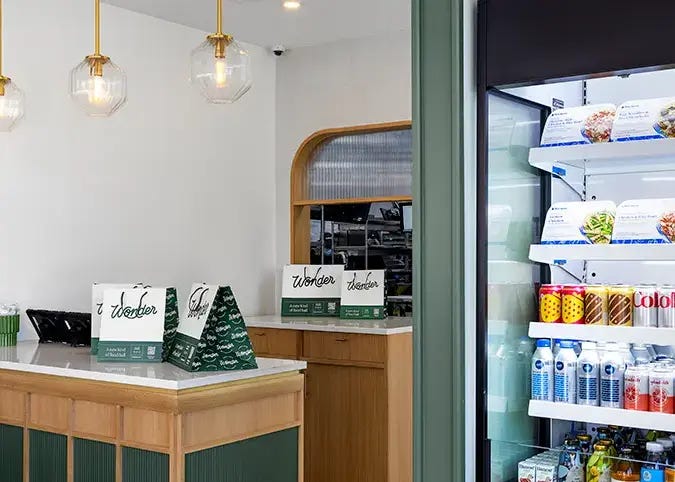Wonder's path to 'autonomous meals' is paved with free delivery
Wonder killed delivery fees on orders from its stores after another $600 million investment. Marc Lore’s “mealtime superapp” is now worth $7 billion with plans for more growth and a wild AI infusion.
Wonder, the “mealtime superapp” and restaurant storefront with just under 50 locations in the northeast US, just ditched delivery fees on orders from its stores. The brand is now offering customers $0 delivery in what is surely an effort to encourage growth amid fierce delivery competition. Subscribers to Wonder+, who pay $8 per month, won’t have to pay the 12% service fee on each order, either.
A few weeks ago, a rep for the company told me Wonder wasn’t planning to raise its menu prices to accommodate these changes. And while the fees aren’t huge — Wonder charged about $2 to deliver — I can’t stop thinking about how a new and potentially disruptive model is, yet again, using a massive amount of investor cash to revamp our takeout expectations.
Wonder offers menu items from up to 30 restaurant brands inside one physical location. So far, the company has raised over $2 billion, including a $600 million funding round announced earlier this month that values the company at $7 billion. It’s led by serial entrepreneur Marc Lore, and recently surprised industry watchers (like me) with a couple of unexpected acquisitions; it bought ailing national delivery service Grubhub in January for $650 million, then in March snapped up food-focused media company Tastemade for a reported $90 million. It plans to double its physical footprint by the end of the year.
Lore, a kind of e-commerce legend, is a relative newcomer to the restaurant industry. That hasn’t stopped him from aggressively pursuing a futuristic vision to change how we eat. If anything, his outsider status seems to have emboldened him, and now he’s applying e-commerce successes to restaurant cooking and delivery… no matter the cost. Take Wonder’s kitchens, each outfitted with speciality equipment developed to cook food with new techniques and minimal human intervention. Wonder’s ovens can replicate the sear on a steak, without ever using a flame, for example.
“The the kitchen looks more like a micro-fulfillment center than it does a kitchen,” Lore told me in a December interview. “It's very systematized: find the steak in this refrigerator, put it in this oven, take it out, put it on the conveyor.”
Those systems, once perfected, are easy to replicate at scale.
Early in Wonder’s trajectory, Lore says plenty of people, including chefs, doubted the idea. ‘They said, ‘you can’t cook a steak in an oven without a flame.’ And in the beginning, they were right — there was no technology to do it. But after investing hundreds of millions of dollars and having a team that was focused and motivated on creating these new capabilities, [we were] finally able to do it.”
Wonder has since courted a number of well-known chefs, including Bobby Flay, who created a Wonder-exclusive steakhouse brand. It’s the tech that sold him; once the team showed Flay the steak-cooking technology, Lore said, “he invested a million bucks on the spot.”
Chefs — at least the ones I’ve talked to — love working with Wonder. I spoke to a handful last year while reporting an Eater story about the service. None offered details of their financial arrangements with the Wonder, but several told me they received offers of cash plus company equity, a compensation structure common in tech startups but less common in restaurants. Fees paid to restaurants are rumored to be high; a Wonder exec (who’s since left the company) described them to me in 2022 as “sizable partnership fee[s].”



